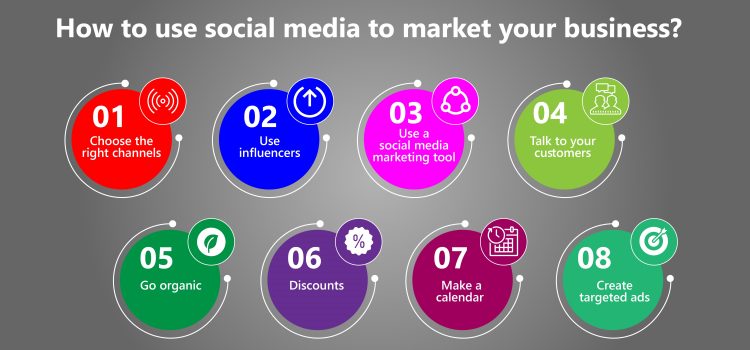
In today’s digital age, social media has become an tool for organizations to navigate and manage crises effectively. The real-time nature social media platforms allows businesses to communicate with their stakeholders promptly, address concerns, and manage their reputation during challenging times. This article explores the critical role of social media in Crisis Management, highlighting how organizations can leverage social media channels to mitigate the impact of crises, maintain transparency, and build trust with their audiences.
1. Proactive Communication Strategy:
During a crisis, prompt and transparent communication is key to Crisis Management on social media. Organizations can utilize platforms like Twitter, Facebook, and LinkedIn to provide timely updates, share important information, and address customer inquiries. By proactively communicating with stakeholders on social media, businesses can demonstrate their commitment to transparency, accountability, and crisis resolution, helping to prevent misinformation and maintain trust in their brand.
2. Monitoring and Listening:
Social media monitoring tools play a crucial role in Crisis Management by enabling organizations to track conversations, sentiment, and emerging issues related to a crisis. By actively listening to online conversations and monitoring mentions of their brand, businesses can quickly identify potential crises, assess the severity of the situation, and intervene to address concerns before they escalate. Monitoring social media allows organizations to stay informed, respond promptly, and adapt their Crisis Management strategies in real-time.
3. Engaging with Stakeholders:
Effective Crisis Management on social media involves engaging with stakeholders in a meaningful and empathetic manner. Organizations can use social media platforms to engage with customers, employees, media, and other key audiences during a crisis, providing updates, answering questions, and acknowledging concerns. By engaging proactively, organizations can demonstrate their commitment to customer satisfaction, employee well-being, and stakeholder communication, fostering a sense of trust and transparency in their Crisis Management efforts.

4. Humanizing the Brand:
Social media offers organizations an opportunity to humanize their brand and connect with audiences on a personal level during crises. By sharing authentic stories, empathetic messages, and behind-the-scenes insights on social media platforms, businesses can showcase their human side, demonstrating empathy, integrity, and a customer-centric approach to Crisis Management. Humanizing the brand on social media builds credibility, fosters connection, and enhances the organization’s reputation in times of crisis.
5. Crisis Response Team Coordination:
Social media serves as a central hub for Crisis Management teams to coordinate and collaborate during crises, ensuring a unified and consistent response across channels. Crisis response teams can use social media platforms to share information, assign tasks, and track responses in real-time, facilitating seamless communication and decision-making. By leveraging social media for team coordination, organizations can streamline Crisis Management processes, mitigate potential risks, and enhance their crisis response effectiveness.
6. Reputation Monitoring and Management:
Maintaining a positive reputation is critical in Crisis Management, and social media plays a vital role in monitoring and managing brand reputation during crises. Organizations can use social listening tools to monitor sentiment, track mentions, and assess the impact of a crisis on their brand reputation. By actively managing their online presence, responding to feedback, and addressing negative sentiment on social media, businesses can safeguard their reputation, rebuild trust, and demonstrate their commitment to resolving issues effectively.
7. Crisis Communication Planning:
Social media platforms are instrumental in Crisis Management planning, enabling organizations to develop proactive communication strategies and crisis response plans in advance. By establishing crisis communication protocols, developing social media guidelines, and conducting regular simulations and training exercises, businesses can prepare for potential crises and respond swiftly and effectively when faced with an emergency. Crisis communication planning on social media helps organizations anticipate challenges, coordinate responses, and mitigate reputational damage during times of crisis.
8. Transparency and Authenticity:
Transparency and authenticity are key principles of Crisis Management on social media, as organizations strive to build trust and credibility with their audiences. By being transparent in their communication, acknowledging mistakes, and taking responsibility for their actions, businesses can demonstrate integrity, openness, and a genuine commitment to resolving crises. Authenticity in crisis communication fosters trust, strengthens relationships, and positions organizations as credible and reliable sources of information during challenging times.
9. Social Media Crisis Response Playbook:
Developing a social media Crisis Management playbook is essential for guiding organizations in their response to crises on digital platforms. The playbook outlines key procedures, responsibilities, and communication guidelines for Crisis Management on social media, ensuring consistency, clarity, and efficiency in handling crises. By creating a Crisis Management playbook specific to social media, organizations can establish a structured approach, empower their teams, and enhance their readiness to address crises effectively in the digital space.
10. Learning and Adaptation:
In Crisis Management on social media, continuous learning and adaptation are critical for organizations to refine their strategies, improve their response tactics, and enhance their Crisis Management capabilities over time. By analyzing past crises, gathering feedback, and evaluating the effectiveness of their social media responses, businesses can identify areas for improvement, implement best practices, and adapt their Crisis Management approaches to address emerging challenges and trends in the digital landscape.










